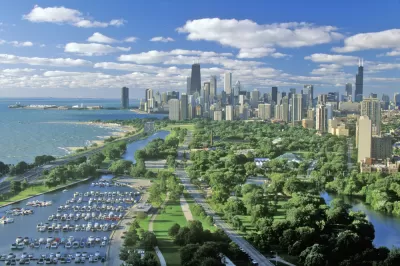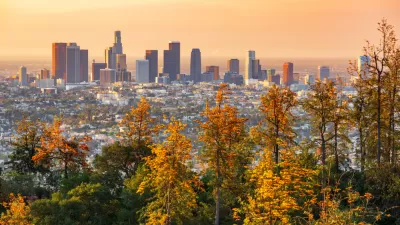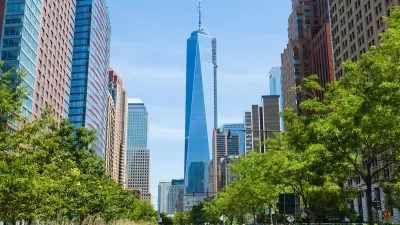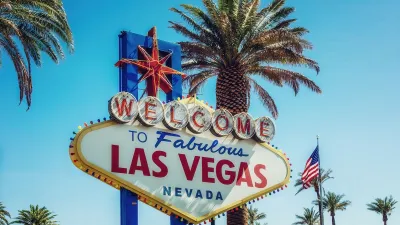As part of the Trillion Trees Initiative, cities across the country are pledging to plant trees and restore urban forests to fight climate change and cool off disadvantaged communities.

More trees are needed to improve air quality in communities that have been disproportionately affected by pollution and climate change. These communities are typically not only lacking in trees; many of them also face a variety of other challenges that adversely impact the health and well-being of residents.
Jad Daley, president and chief executive officer of American Forests, says, “It’s not just about more trees in cities. If you show me a map of tree cover in any city, you’re showing me a map of race and income levels. We see this as nothing less than a moral imperative.”
American Forests is part of the Trillion Trees Initiative, "a global push to encourage reforestation to capture carbon and slow the effects of global heating." Specifically, a coalition of U.S. cities, companies, and nonprofits has committed to planting and restoring 855 million of trees by 2030. The group recognizes that to truly address climate change, the initiative must be strategic and "reach traditionally disinvested neighborhoods and communities that need cooling, shade, and green space," writes Patrick Sisson.
Adrian Benepe, vice president and director of national programs for the Trust for Public Land, says, “There isn’t a machine invented that can suck down carbon better than trees.” New research by the Natural Areas Conservancy, a New York-based group focused on preserving and protecting urban forests, highlights just how efficient trees can be at storing carbon.
"The roughly 6 million trees in the New York City’s 7,300 acres of natural forested areas represent a quarter of the city’s tree canopy, due to their density, but they account for 69 percent of the stored carbon and 83 percent of the sequestered carbon across the city," notes Sisson.
In addition to maintaining existing urban forests in parks, cities should also focus on ways to increase dense tree canopy coverage outside of parklands. In places like New York City, finding room for new, dense forests is increasingly challenging, but there are still some opportunities. For example, the city can use areas such as abandoned railways, utility corridors, and public right-of-ways. Cities should particularly be creative in finding locations and solutions for providing more trees in under-resourced communities.
FULL STORY: Can Planting Trees Make a City More Equitable?

Alabama: Trump Terminates Settlements for Black Communities Harmed By Raw Sewage
Trump deemed the landmark civil rights agreement “illegal DEI and environmental justice policy.”

Planetizen Federal Action Tracker
A weekly monitor of how Trump’s orders and actions are impacting planners and planning in America.

How Atlanta Built 7,000 Housing Units in 3 Years
The city’s comprehensive, neighborhood-focused housing strategy focuses on identifying properties and land that can be repurposed for housing and encouraging development in underserved neighborhoods.

In Both Crashes and Crime, Public Transportation is Far Safer than Driving
Contrary to popular assumptions, public transportation has far lower crash and crime rates than automobile travel. For safer communities, improve and encourage transit travel.

Report: Zoning Reforms Should Complement Nashville’s Ambitious Transit Plan
Without reform, restrictive zoning codes will limit the impact of the city’s planned transit expansion and could exclude some of the residents who depend on transit the most.

Judge Orders Release of Frozen IRA, IIJA Funding
The decision is a victory for environmental groups who charged that freezing funds for critical infrastructure and disaster response programs caused “real and irreparable harm” to communities.
Urban Design for Planners 1: Software Tools
This six-course series explores essential urban design concepts using open source software and equips planners with the tools they need to participate fully in the urban design process.
Planning for Universal Design
Learn the tools for implementing Universal Design in planning regulations.
Jessamine County Fiscal Court
Caltrans
Institute for Housing and Urban Development Studies (IHS)
City of Grandview
Harvard GSD Executive Education
Toledo-Lucas County Plan Commissions
Salt Lake City
NYU Wagner Graduate School of Public Service





























